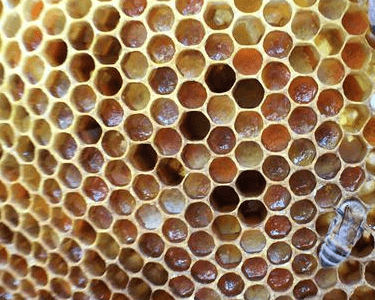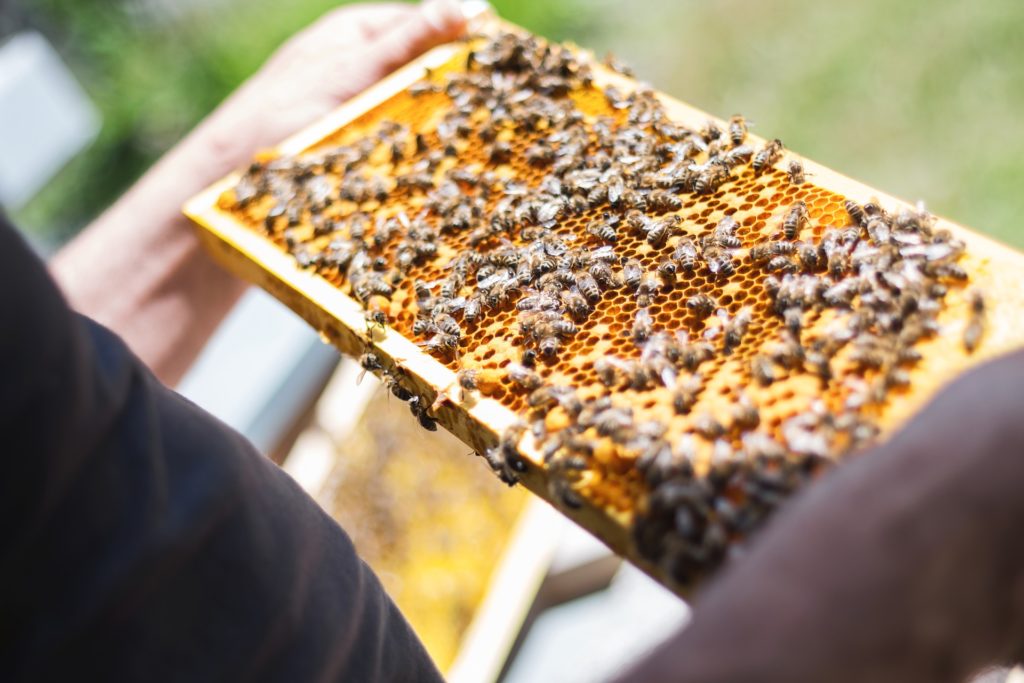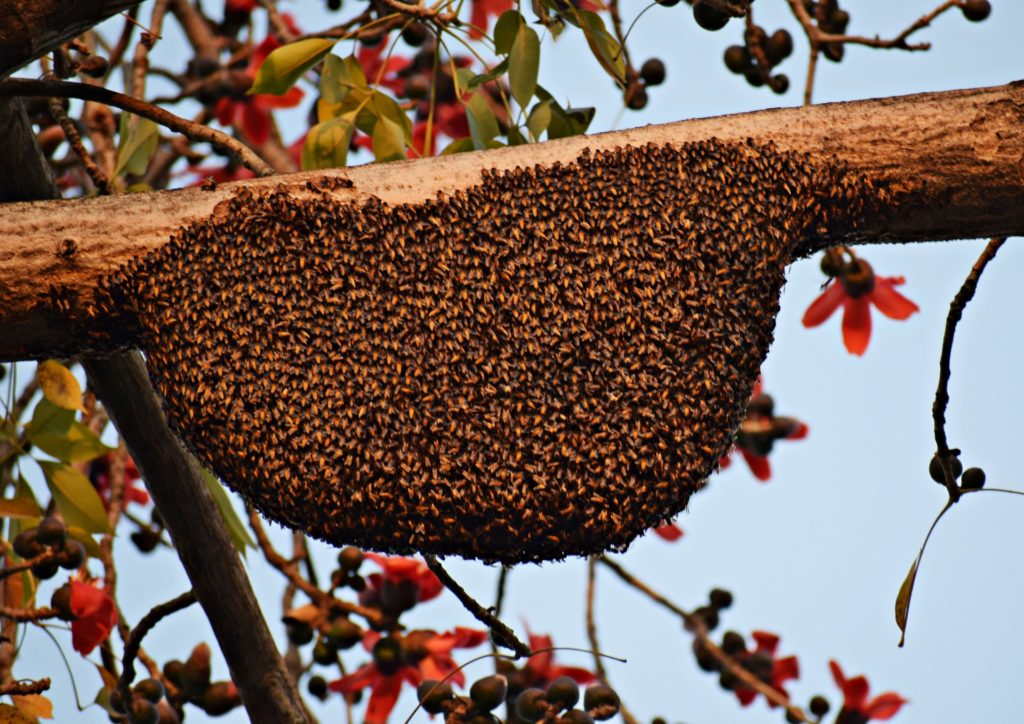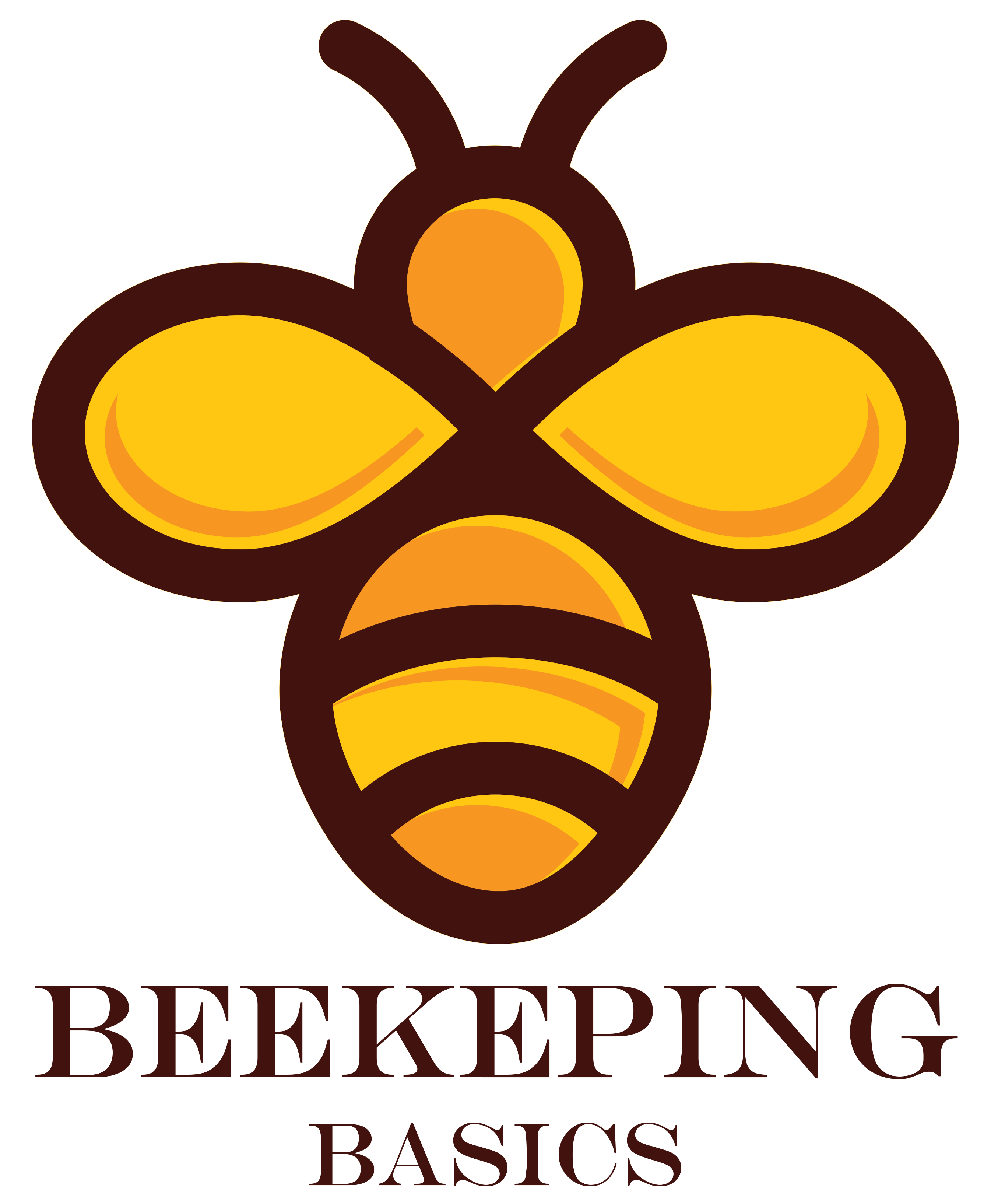One of the most important things in beekeeping is the ability to do a brood inspection. If you are wondering how to do it, here you will find some useful advice.
The best thing to do is to do your brood inspection on warm days when it is not cold or raining. This is very convenient because this is when most of the bees are out and you will be able to work more freely. During the spring and summer, it is better to do a brood inspection more frequently, every two or three weeks. By checking your beehives more frequently you will get more sense for the condition of your colonies. You will become more confident in finding out if there is something wrong, do the bees need more space, is the number of bees decreasing etc.
What kind of equipment will you need?
You should be dressed in the protective gear. Also, check if it is fully zipped before opening the hives. Another very important thing is the smoker. In order to make the fuel for the smoker, you will need some paper and some leaves or grass. You should start a fire in the smoker with these ingredients, and once there are lit you should add more material. Make sure that you add enough of the materials so you have the smoker working during the whole procedure. Using the smoker, make some puffs into the hive in order to make the bees calmer.
Useful advice:
Be careful when working with your frames and do not worry – you will get better and faster soon enough! Always be careful to give the frames some room and even move them in order to conduct a better inspection. Also, always do the manoeuvres with the frames right above the beehive to prevent losing the queen. To make a thorough inspection of the broods, use sharp shakes of the frames in order to shake the bees off of them. Do not move very quickly, but still try to finish your work without the hive being open for a long time. In the end, when finishing, try to put the frames back in the same order.
Here’s what you should look for in your brood inspection:
Space – Bees usually start working from the centre and continue working towards the ends. Your bees will need extra space if you see that the brood frames at the ends of the box have brood.
Food – Always make sure that your bees have enough food, especially in the winter. They should have enough capped honey and pollen. It is better to leave some of the frames with honey. How many frames to leave depends on the climate on your location. The best thing to do is to consult a local and more experienced beekeeper for advice.
On the first picture we have pollen and on the second one honey.


Disease – Look for the existence of pest or some disease. If you are not sure what you are looking at, consult with a more experienced beekeeper.
Eggs – The queen lays her eggs in the centre of the cell and if you bring the frame to a better light you will spot them.

This is a sign that your queen is active, fertile and present. Also, when you look at the brood it should be full (like in the picture below). This is when it is healthy. Moreover, look for a sign to show you if there is a worker brood or a drone brood. If you notice drone brood being more present, this may be a sign for you that the queen is missing or she may not be fertile. Actually, worker bees lay eggs too, but they are not fertilized and hereby become drone brood. Also, you can make a distinction between drone and worker bees. Drone bees have bigger eyes and fatter body, unlike the worker bees which are smaller.

Swarm – your hive may be ready to swarm if there are drones and queen cells. Read more about swarming here.



Pingback:Things That Beginner Beekeepers Should Not Be Concerned About
Pingback:Become A Successful Beekeeper By Following These 10 Tips!
Pingback:How To Locate The Queen Bee?